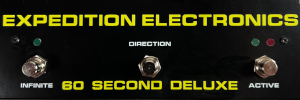Showing posts sorted by date for query Fundamental Frequency. Sort by relevance Show all posts
Showing posts sorted by date for query Fundamental Frequency. Sort by relevance Show all posts
Thursday, October 02, 2025
Crow Hill & Bleeding Fingers Proudly Present PREHISTORIC STRINGS Library
video upload by CROW HILL
Press release follows:
The Crow Hill Company works with Bleeding Fingers to proudly present PREHISTORIC STRINGS as unique string library built from bespoke instruments
EDINBURGH, UK: working with award-winning composers collective Bleeding Fingers, Edinburgh-based enterprise The Crow Hill Company is proud to present PREHISTORIC STRINGS as a truly unique string library — literally built from one-of-a-kind bespoke instruments incorporating horns and teeth with a few ancient bones thrown in for good measure, making for hybrid monstrosities to create tones that are haunting, primordial, and staggeringly beautiful in their truly primitive nature — as of September 25…
Putting PREHISTORIC STRINGS into its rightful perspective involves delving deep into the past in more ways than one — not least The Crow Hill Company’s ongoing relationship with its collective friends at Bleeding Fingers. For it all started when the latter’s talented Anže Rozman and Kara Talve worked with Hollywood hotshot Hans Zimmer — arguably one of the greatest, certainly one of the most prolific film composers of our time, noted for his innovative integration of electronic sounds with traditional orchestral arrangements — on the primetime television series Prehistoric Planet (2022-2025). As always with both Bleeding Fingers’ and Hans Zimmer’s approach to composition, the creation of truly unique sound-worlds played a fundamental role in the development of said score. An audacious project, indeed, it involved the construction of a selection of string instruments built with bones, horns, skulls, and cannibalised classical instruments, including a cello, frame drum, resonating dulcimer, and many more besides. But credit where credit’s due to the killer composing team involved in instinctively understanding that the resulting score’s success merely represented the tip of the iceberg in terms of the potential of their unique inventions and agreeing to share them with the rest of the composing community.
Thursday, May 08, 2025
Introducing Programma 900 2.0 by Destiny+
video upload by kirkis
via Destiny+
"Programma 900 is a harmonic musical computer.
Built on fpga and arm cortex technology.
** Programma 900 has 6 polytonal voices, each featuring Odd harmonic, Even harmonic, Harmonic partials, Harmonic tilt and fundamental frequency control.
** Four quadrant multiplication of individual voices
** x32 complex gestural cv buffers allowing 6 min cv recording windows for all x32 mod destinations and voice envelopes
** individual modes for speed and attenuation for each x32 gestural cv buffer.
Sunday, April 06, 2025
Baloran Introduces TheBumBleBee (aka The 3B)
video upload by Laurent Baloran
"A zen moment at the helm of The 3B.
more informations on https://baloran.com/store/index.php?r..."


Available in desktop and eurorack formats.
Google translated:
The 3B is delivered assembled in its external case: 2mm folded aluminum, 4mm machined aluminum front, epoxy paint, DC/DC converters and Meanwell power supply, the whole demonstrates a hardware quality that lives up to the pleasure that The 3B brings.
On the left (yellow adjustable support) is a 3D Laser/IR, without any danger for fingers and eyes, it is a specific technology called TOF (Time Of Flight). This sensor transmits an image of your hand or any other object that enters its cone of vision, as well as the precise distance between the object and the sensor. The image allows, by analysis, to determine the X and Y position of the hand or the object. The Z height is transmitted directly by the sensor with millimeter precision.
A second identical sensor, placed on the right (blue swivel support), transmits the X2, Y2, Z2 coordinates as well as a GATE G2, allowing completely independent two-handed play.
In the center, two buttons A and B are very sensitive pressure sensors. They transform pressure into voltage available on the A/X2 and B/Y2 sockets. They can operate as two independent sources or as a single source controlled by the two buttons: in this case, button A decrements the value, B increments it and both can act simultaneously to allow excellent control finesse.
Management of height information (Z1 and Z2)
The height of the hand, another part of the body, or an object in relation to the sensor is fundamental playing information and The 3B offers you several ways to manage it.
LIKE THEREMIN mode
When the hand enters the cone of visibility of the sensor, the GATE is activated. The voltage available on Z will correspond to the height of your hand. By default, The3B offers 120mm per octave. With its sensitivity, in broad daylight and without gloves, you cover three octaves minimum. You can change this 120mm reference per octave (possible values 72, 96, 120, 180, 240 and 360 mm)
SELECTED SEMITONE mode
Each 10 mm of movement (with 120 mm/octave setting) corresponds to a semitone. The GATE in this mode is generated for each note played. You can activate/deactivate certain semitones to limit the range to a specific key or notes.
Wednesday, March 12, 2025
Omnitone Eurorack Modular Synthesizers
video uploads by Omnitone
Playlist & modules:
1. This is Rhythmi.
Rhythmi is a Eurorack drum sequencer that allows you to dial in your groove, and explore it by evolving the pattern and modulating the energy. It allows for rhythmic inspiration and creativity without the burden of step programming. The evolve parameter enables smooth transitions between related rhythms through the use of branches. New branches can be generated at the push of a button, loading up a whole new branch of related rhythms to explore. The Evolve parameter is the heart of Rhythmi, its inspiration, and defining feature. Allowing rhythms to shift, transform, and melt into one another. The Clock Section provides internal or external clocking with division or multiplication. The Customize Section shapes individual drum elements through density and syncopation. The Global Section introduces macro-level control over the rhythm via the Energy, Evolve, Length and Swing parameters, dynamically shaping fills and variations. Rhythmi has a jumper cable connector on the back to pair up seamlessly with Beatsi, the drum voice it was designed alongside with.
2. This is Beatsi.
Beatsi is our love letter to modular drums! Inspired by classic modular drum synthesis which uses the fundamental building blocks, Beatsi’s timbres were created using the same methods, only digitally, to minimize footprint. Beatsi is not a sample player or a physical modeller, and it’s meant to be that way. Beatsi’s interface allows for control over individual piece Timbre, Pitch, Decay, and Level. The timbres are organized into 3 kits: an orange (acoustic) kit, a blue (low-fi) kit, and a green (alien) kit. Within these kits the timbres blend smoothly into one another allowing for seamless modulation. Beatsi has two CV modulation inputs which are assignable to any and all parameters with individual attenuversion. Beatsi may be small, but it packs a serious punch.
3. This is Rosci.
TUNABLE PARAMETERS BREAKDOWN: COMPLEXITY: Essentially a generation of unique timbre. ROUNDNESS: Set the basic shape of your waveform. Go from from sharp to soft sound, similar to filtering. HARMONICS: Add up to 6 harmonies to your sound. The choir's here. FORMANTS: Accentuate certain overtones in your sound (like a voice singing "ooo", "ahh", "eee"). DETUNE: Add a classic 'detune' with a changing phase wave for extra wide sound. HOW DOES IT WORK? It is a pipeline of algorithms, which generates and modifies a waveform starting from top to bottom. Rosci works on a principle of key points: the generate button generates key point location and amplitudes to be passed down the pipeline.
Tunable parameters:
Beginning with complexity, you set the number of key points (even numbers only to create a waveform). Lowest complexity sets two points, and highest complexity sets up to 20 points. The number of key points will vary with each waveform generated. From there, the roundness sets the type of interpolation of the key points, from square to sine. Adjusting the harmonics creates copies of the waveform and adds them to the original waveform at double, triple, ... up to 6x the base frequency. Formants maintains the frequency of the wave, but squishes it so there is 'empty space' in between (this is also called pulsar synthesis). Finally, detune copies the waveform and 'detunes it' by increasing the frequency ever so slightly. And there you have it: a unique Rosci soundscape :)
4. This is Melodi.
Melodi is a semi-random sequence generator built for Eurorack! No more time spent fidgeting with sequence steps, Melodi generates sequences based on the mood you set so you can create the sound you’re searching for—It can be tweaked to create anything from a powerful bassline to a sparkly melody.5. Made by Rosci.
Friday, February 07, 2025
Logan String Orchestra
Note: links to listings are affiliate links for which the site may be compensated.
via this listing


 "A perfect working Logan String Orchestra, the lush string synthesizer released by the Italian company Logan in 1973. The machine has been recently checked and calibrated by a professional technician, it works like a charm.
"A perfect working Logan String Orchestra, the lush string synthesizer released by the Italian company Logan in 1973. The machine has been recently checked and calibrated by a professional technician, it works like a charm.
Released in 1973, the String Orchestra expanded Logan's range of string synthesizers by offering warmer and more refined sounds. It positioned itself as an alternative to the edgier character of the String Melody I, also produced by Logan, as well as to later string synthesizers like the Solina String Ensemble. The String Orchestra is a fully polyphonic synthesizer featuring three parallel BBD (Bucket Brigade Device) chorus circuits and a unique architecture that makes this machine truly one of a kind.
The Panel
The Logan String Orchestra features five mixable string sounds, each with its own dedicated volume slider. Interestingly, these sliders are duplicated on the front panel, with one set assigned to the first two octaves and the other set assigned to the remaining two octaves on the right. When both sets of sliders are adjusted identically, the same sound is produced across the entire keyboard. However, by setting them differently, you can perform with two distinct sounds simultaneously on the left and right sides. The small panel near the keyboard features the following controls:
Bass: Volume slider for the bass sound, assigned to the left side of the keyboard
Perc: Adjust this slider to make the bass sound punchier
Tone: Functions like the "Brilliance" slider found on many vintage string machines, shaping the brightness of the sound
Slalom: Acts as a pitch bend control, also useful for fine-tuning the main patch
Volume: Master volume slider for the overall output
Hawaii: A piezo tactile switch that temporarily applies a pitch envelope to the notes being played
Orchestra : when this button is ON, the synth deactivates Violins and Bass
The Sound
The overall sound of the String Orchestra is silky, warm, and extremely pleasant—quite similar to the string sounds of the marvelous Godwin Symphony 849. It’s rich and velvety in the midrange, while remaining precise and never harsh in the higher octaves. This makes it quite different from the grittier, wilder sound of the popular String Melody, also produced by Logan.
The Cello, Viola, and Violin sounds represent three different octaves of the same oscillator: a beautiful, smooth, and highly musical sawtooth waveform. When used individually, these three sounds create a peaceful and smooth string tone, where you can truly appreciate the lush effect of the three parallel BBD choruses in action.
The two Orchestra sounds are based on a rectangular waveform. They share the same fundamental frequency but differ in pulse width and filtering. Orchestra I features a very narrow pulse width, a 12 dB/oct low-pass filter fixed at 10 kHz, and a low-frequency cutoff that doesn’t go below 180 Hz—perfect for adding extra harmonics to the patch. Orchestra II has a wider pulse width, a 6 dB/oct low-pass filter with mild resonance, adding warmth and body to the patches.
And finally, the Bass sound. This is a very fat, filtered sawtooth waveform ranging from C0 to A1. The Perc slider adds a gummy sine waveform with a fast attack and a gently quick decay. By lowering all the sliders on the right side, it’s possible to play the Bass sound on its own."
via this listing


 "A perfect working Logan String Orchestra, the lush string synthesizer released by the Italian company Logan in 1973. The machine has been recently checked and calibrated by a professional technician, it works like a charm.
"A perfect working Logan String Orchestra, the lush string synthesizer released by the Italian company Logan in 1973. The machine has been recently checked and calibrated by a professional technician, it works like a charm.Released in 1973, the String Orchestra expanded Logan's range of string synthesizers by offering warmer and more refined sounds. It positioned itself as an alternative to the edgier character of the String Melody I, also produced by Logan, as well as to later string synthesizers like the Solina String Ensemble. The String Orchestra is a fully polyphonic synthesizer featuring three parallel BBD (Bucket Brigade Device) chorus circuits and a unique architecture that makes this machine truly one of a kind.
The Panel
The Logan String Orchestra features five mixable string sounds, each with its own dedicated volume slider. Interestingly, these sliders are duplicated on the front panel, with one set assigned to the first two octaves and the other set assigned to the remaining two octaves on the right. When both sets of sliders are adjusted identically, the same sound is produced across the entire keyboard. However, by setting them differently, you can perform with two distinct sounds simultaneously on the left and right sides. The small panel near the keyboard features the following controls:
Bass: Volume slider for the bass sound, assigned to the left side of the keyboard
Perc: Adjust this slider to make the bass sound punchier
Tone: Functions like the "Brilliance" slider found on many vintage string machines, shaping the brightness of the sound
Slalom: Acts as a pitch bend control, also useful for fine-tuning the main patch
Volume: Master volume slider for the overall output
Hawaii: A piezo tactile switch that temporarily applies a pitch envelope to the notes being played
Orchestra : when this button is ON, the synth deactivates Violins and Bass
The Sound
The overall sound of the String Orchestra is silky, warm, and extremely pleasant—quite similar to the string sounds of the marvelous Godwin Symphony 849. It’s rich and velvety in the midrange, while remaining precise and never harsh in the higher octaves. This makes it quite different from the grittier, wilder sound of the popular String Melody, also produced by Logan.
The Cello, Viola, and Violin sounds represent three different octaves of the same oscillator: a beautiful, smooth, and highly musical sawtooth waveform. When used individually, these three sounds create a peaceful and smooth string tone, where you can truly appreciate the lush effect of the three parallel BBD choruses in action.
The two Orchestra sounds are based on a rectangular waveform. They share the same fundamental frequency but differ in pulse width and filtering. Orchestra I features a very narrow pulse width, a 12 dB/oct low-pass filter fixed at 10 kHz, and a low-frequency cutoff that doesn’t go below 180 Hz—perfect for adding extra harmonics to the patch. Orchestra II has a wider pulse width, a 6 dB/oct low-pass filter with mild resonance, adding warmth and body to the patches.
And finally, the Bass sound. This is a very fat, filtered sawtooth waveform ranging from C0 to A1. The Perc slider adds a gummy sine waveform with a fast attack and a gently quick decay. By lowering all the sliders on the right side, it’s possible to play the Bass sound on its own."
Wednesday, January 29, 2025
Vaemi Atari Punk Console (Standalone & Eurorack)
Note: links to listings are affiliate links for which the site may be compensated.
video upload by Vaemi
Playlit:
Atari Punk Console : Short Review : Vaemi (Standalone Synthesizer)
Atari Punk Console : Basic Features : Vaemi (Standalone Synthesizer)
Atari Punk Console : With Analog Ribbon Controller : Vaemi (Eurorack)
Atari Punk Console : With Analog Sequencer : Vaemi (Standalone Synthesizer)
Mini Mixer (With Atari Punk Console, Cracklebox & PO-12) : Short Review : Vaemi (Synthesizer)
via Vaemi Reverb
VAEMI's Atari Punk Console features a circuit design that operates with two oscillators and the modulation between these oscillators. Based on the "Stepped Tone Generator" circuit developed by Forrest M. Mims III in the early 1980s, this design is one of the significant milestones in electronic music history.
Thanks to the two oscillators, it offers the possibility to select harmonic degrees based on the fundamental frequency. This feature allows users to create melodic arpeggios.
video upload by Vaemi
Playlit:
Atari Punk Console : Short Review : Vaemi (Standalone Synthesizer)
Atari Punk Console : Basic Features : Vaemi (Standalone Synthesizer)
Atari Punk Console : With Analog Ribbon Controller : Vaemi (Eurorack)
Atari Punk Console : With Analog Sequencer : Vaemi (Standalone Synthesizer)
Mini Mixer (With Atari Punk Console, Cracklebox & PO-12) : Short Review : Vaemi (Synthesizer)

via Vaemi Reverb
VAEMI's Atari Punk Console features a circuit design that operates with two oscillators and the modulation between these oscillators. Based on the "Stepped Tone Generator" circuit developed by Forrest M. Mims III in the early 1980s, this design is one of the significant milestones in electronic music history.
Thanks to the two oscillators, it offers the possibility to select harmonic degrees based on the fundamental frequency. This feature allows users to create melodic arpeggios.
LABELS/MORE:
Atari Punk Console,
Auctions,
DIY,
eurorack,
New DIY,
New Modules,
New Sound Machines,
News,
Vaemi
Tuesday, December 10, 2024
Noise Engineering Announces Three New Firmwares for Their Popular Platform Modules
Ampla Legio multimode filter-gate with vactor-inspired ASD envelope from Noise Engineering
video upload by Noise Engineering
"Ampla Legio was the result of our desire for a stereo gate to accommodate the growing number of stereo audio sources in the Eurorack format. With a multimode filter that can be gnarly or nice, a vactrol-inspired ASD envelope, and CV control over filter frequency and envelope timing, Ampla is a simple-yet-effective solution for organic dynamics control.
More information on Ampla Legio here: https://noiseengineering.us/products/...
If you already own a Legio module, then you can swap to this firmware for free at our website: https://www.noiseengineering.us."
Press release, including the additional firmwares, follows:



"Noise Engineering announces three new firmwares for their popular platform modules: a formant filter, a cross-modulating oscillator, and a multimode-filter gate.
Los Angeles, CA — Noise Engineering, known for their flexible Eurorack synthesizer modules, plugins, and guitar pedals, has announced new options for each of their platform modules: Fala Versio, Toros Iteritas Alia, and Ampla Legio, all releasing this December. Now with10 Versio and 7 Legio and Alia firmwares, Noise Engineering is showing the depth and versatility of the platform concept. In short, if you own a NE platform module, you can go to the Noise Engineering website and swap the firmware to anything else on that platform via USB, as often as you like, free of charge. It’s like getting seven (or ten) modules for the price of one.
First up is Ampla Legio, a simple multimode-filter gate. Lowpass gates are a common tool in modular synthesis, and Ampla Legio brings a modern twist, with a stereo signal path and additional functionality. A vactrol-inspired attack/decay envelope with simple controls modulates the internal stereo VCA and filter, and a sustain phase allows the envelope generator to emulate the response of traditional vactrols. A resonant multimode filter replaces the traditional lowpass model, allowing for LP, BP, or HP response with adjustable squelch. The filter’s base frequency can be adjusted to change the timbre of the gate, and also tracks 1v/8va, allowing the filter to be modulated along with the input signal. Ampla Legio is available as a firmware now.
Coming December 17, 2024 is Fala Versio is a formant filter designed with musicality in mind. While many formant filters attempt to mimic vowel shapes and other traditional sounds, Fala is designed to take the process of formant filtering in a new, musical direction. Along with frequency and resonance controls, Fala features a clock-syncable stereo LFO, a wavefolder, and a post-filter saturator that can take the filter’s tone from beautiful to barbaric. Fala Versio will be available as a module but Versio owners can try it out immediately on release by going to the Noise Engineering Firmware Swap page.
Finally, on December 24, Noise Engineering will drop Toros Iteritas Alia. TIA takes complex three-operator phase-modulation synthesis and makes it simple and fun. Designed for ever-evolving sonic landscapes, Toros has three oscillators with CV-controllable frequency and level parameters. A massive range of timbres are hidden behind its simple interface, with three routing algorithms and a bonus fundamental oscillator output for even more patching capabilities. While Noise Engineering is known for its percussion voices,
Toros breaks the mold, excelling at dark drones and ambient performances.
Ampla Legio is a firmware-only release that works on any Legio hardware and is available starting December 10, 2024. Fala Versio will be available as firmware or a paneled module on December 17, 2024. Toros Iteritas Alia will be available as firmware or a paneled module on December 24, 2024. Platform owners can try them out at launch, completely free, by changing the firmware at the Noise Engineering Firmware Swap page: https://noiseengineering.us/portal/firmware/
Just in time for the holidays (and holiday sales!), all three firmwares are available completely free to owners of each platform. Fala Versio and Toros Iteritas Alia available for purchase as complete modules, too.
Features
• Three all-new firmwares for Noise Engineering’s popular platforms
• Fala Versio brings a new take to formant filtering
• Toros Iteritas Alia makes noisy-or-nice PM synthesis easy
• Use Ampla Legio to control dynamics and timber of any stereo signal
• Platform owners can swap to new firmwares 100% free
Availability and pricing:
Fala Versio: Shipping from Noise Engineering and retailers starting December 17th, 2024; MSRP US$393
Toros Iteritas Alia: Shipping from Noise Engineering and retailers starting December 24th, 2024; MSRP US$385
Firmware Swap page: https://noiseengineering.us/portal/firmware/
Fala Versio Product Page (live at launch): https://noiseengineering.us/products/fala-versio
Toros Iteritas Alia Product Page (live at launch): https://noiseengineering.us/products/toros-iteritas-alia
In silver:



video upload by Noise Engineering
"Ampla Legio was the result of our desire for a stereo gate to accommodate the growing number of stereo audio sources in the Eurorack format. With a multimode filter that can be gnarly or nice, a vactrol-inspired ASD envelope, and CV control over filter frequency and envelope timing, Ampla is a simple-yet-effective solution for organic dynamics control.
More information on Ampla Legio here: https://noiseengineering.us/products/...
If you already own a Legio module, then you can swap to this firmware for free at our website: https://www.noiseengineering.us."
Press release, including the additional firmwares, follows:



"Noise Engineering announces three new firmwares for their popular platform modules: a formant filter, a cross-modulating oscillator, and a multimode-filter gate.
Los Angeles, CA — Noise Engineering, known for their flexible Eurorack synthesizer modules, plugins, and guitar pedals, has announced new options for each of their platform modules: Fala Versio, Toros Iteritas Alia, and Ampla Legio, all releasing this December. Now with10 Versio and 7 Legio and Alia firmwares, Noise Engineering is showing the depth and versatility of the platform concept. In short, if you own a NE platform module, you can go to the Noise Engineering website and swap the firmware to anything else on that platform via USB, as often as you like, free of charge. It’s like getting seven (or ten) modules for the price of one.
First up is Ampla Legio, a simple multimode-filter gate. Lowpass gates are a common tool in modular synthesis, and Ampla Legio brings a modern twist, with a stereo signal path and additional functionality. A vactrol-inspired attack/decay envelope with simple controls modulates the internal stereo VCA and filter, and a sustain phase allows the envelope generator to emulate the response of traditional vactrols. A resonant multimode filter replaces the traditional lowpass model, allowing for LP, BP, or HP response with adjustable squelch. The filter’s base frequency can be adjusted to change the timbre of the gate, and also tracks 1v/8va, allowing the filter to be modulated along with the input signal. Ampla Legio is available as a firmware now.
Coming December 17, 2024 is Fala Versio is a formant filter designed with musicality in mind. While many formant filters attempt to mimic vowel shapes and other traditional sounds, Fala is designed to take the process of formant filtering in a new, musical direction. Along with frequency and resonance controls, Fala features a clock-syncable stereo LFO, a wavefolder, and a post-filter saturator that can take the filter’s tone from beautiful to barbaric. Fala Versio will be available as a module but Versio owners can try it out immediately on release by going to the Noise Engineering Firmware Swap page.
Finally, on December 24, Noise Engineering will drop Toros Iteritas Alia. TIA takes complex three-operator phase-modulation synthesis and makes it simple and fun. Designed for ever-evolving sonic landscapes, Toros has three oscillators with CV-controllable frequency and level parameters. A massive range of timbres are hidden behind its simple interface, with three routing algorithms and a bonus fundamental oscillator output for even more patching capabilities. While Noise Engineering is known for its percussion voices,
Toros breaks the mold, excelling at dark drones and ambient performances.
Ampla Legio is a firmware-only release that works on any Legio hardware and is available starting December 10, 2024. Fala Versio will be available as firmware or a paneled module on December 17, 2024. Toros Iteritas Alia will be available as firmware or a paneled module on December 24, 2024. Platform owners can try them out at launch, completely free, by changing the firmware at the Noise Engineering Firmware Swap page: https://noiseengineering.us/portal/firmware/
Just in time for the holidays (and holiday sales!), all three firmwares are available completely free to owners of each platform. Fala Versio and Toros Iteritas Alia available for purchase as complete modules, too.
Features
• Three all-new firmwares for Noise Engineering’s popular platforms
• Fala Versio brings a new take to formant filtering
• Toros Iteritas Alia makes noisy-or-nice PM synthesis easy
• Use Ampla Legio to control dynamics and timber of any stereo signal
• Platform owners can swap to new firmwares 100% free
Availability and pricing:
Fala Versio: Shipping from Noise Engineering and retailers starting December 17th, 2024; MSRP US$393
Toros Iteritas Alia: Shipping from Noise Engineering and retailers starting December 24th, 2024; MSRP US$385
Firmware Swap page: https://noiseengineering.us/portal/firmware/
Fala Versio Product Page (live at launch): https://noiseengineering.us/products/fala-versio
Toros Iteritas Alia Product Page (live at launch): https://noiseengineering.us/products/toros-iteritas-alia
In silver:



Friday, December 06, 2024
Destiny-Plus Programma 900
Note: links to listings are affiliate links for which the site may be compensated.
via this listing
 "Programma 900 is a harmonic musical computer.
"Programma 900 is a harmonic musical computer.
Built on fpga and arm cortex technology.
** Programma 900 has 6 polytonal voices, each featuring Odd harmonic, Even harmonic, Harmonic partials, Harmonic tilt and fundamental frequency control.
** Four quadrant multiplication of individual voices
** x32 complex gestural cv buffers allowing 6 min cv recording windows for all x32 mod destinations and voice envelopes
** individual modes for speed and attenuation for each x32 gestural cv buffer.
** 3000 note MIDI record buffer and looper.
** X3 location A-B-C / pan controls
** experimental Stereo regeneration / delay algorithm with over 12 min regeneration buffers, multiple regeneration modes & buffer filters.
** 6x interpolating morphing inputs to each voice
Accompanying programma 900 is a desktop app native to Mac OSX that opens extra utilities on the hardware such as
* multiple voice allocation modes
* pnp / drum mode
* dice/randomising all hardware parameters
* grouping banks of parameters together per voice.
* calibration
* saving / exporting and importing / preset management."
via this listing
 "Programma 900 is a harmonic musical computer.
"Programma 900 is a harmonic musical computer.Built on fpga and arm cortex technology.
** Programma 900 has 6 polytonal voices, each featuring Odd harmonic, Even harmonic, Harmonic partials, Harmonic tilt and fundamental frequency control.
** Four quadrant multiplication of individual voices
** x32 complex gestural cv buffers allowing 6 min cv recording windows for all x32 mod destinations and voice envelopes
** individual modes for speed and attenuation for each x32 gestural cv buffer.
** 3000 note MIDI record buffer and looper.
** X3 location A-B-C / pan controls
** experimental Stereo regeneration / delay algorithm with over 12 min regeneration buffers, multiple regeneration modes & buffer filters.
** 6x interpolating morphing inputs to each voice
Accompanying programma 900 is a desktop app native to Mac OSX that opens extra utilities on the hardware such as
* multiple voice allocation modes
* pnp / drum mode
* dice/randomising all hardware parameters
* grouping banks of parameters together per voice.
* calibration
* saving / exporting and importing / preset management."
Monday, September 02, 2024
Vaemi Introduces VoltRatio Precision Voltage Adder - Subtractor Eurorack Module
video upload by Vaemi
"VoltRatio : Basic Features : Precision Voltage Adder - Subtractor : Vaemi (Eurorack)"
"The VoltRatio 1V/OCT CV input allows you to quickly and easily switch through exactly 6 harmonic degrees. Additionally, this module enables you to obtain both a copy of the fundamental frequency's voltage and a frequency one octave below simultaneously, allowing you to comfortably control up to 3 oscillators at once. Furthermore, designed as a precision multiple, this module offers precise and professional calibration options, helping your system stay in accurate tuning and advancing both you and your system.
The frequency ratio system, which can also be found in the first digital examples of Thru Zero Frequency Modulation and allows easy adjustment of harmonic degrees in all operator oscillators according to the fundamental frequency, is crucial for maintaining musical and tonal compatibility. This system greatly simplifies programming in complex FM patches. With the three separate outputs designed as Vaemi, which replicate the 1V/OCT CV input like a precision multiple and provide different degrees, you can use all analog thru zero or standard voltage-controlled oscillators. Quickly navigating between harmonic degrees during recording or live performances will provide significant musical and practical advantages. The output providing harmonic degrees (Ratios) includes 2 buffered outputs, making a total of 4 CV outputs on the module.
You can adjust the desired voltage and harmonic degrees between 0-6V according to your preferences and needs using the trimpots on the back of the module. Additionally, you can set the -1 OCT output to the desired negative level using the trimpots on the back.
All inputs and outputs of the module are DC coupled. Essentially, the module adds or subtracts an offset voltage to the voltage entered into the 1V/OCT CV input. We can think of it as a precision CV adder-subtractor. The sum of the entered and added voltages is what comes out of the outputs. In short, you can also use this module to shift the offset, process signals like envelopes or LFOs, and more. (Note about the module: one of the most important points is that it has both positive and negative outputs and precise calibrations for offset and CV scale. So, it’s not just about adding offset voltage to the voltage.)
You can read which channel you are on from the top of the module or easily determine it with the help of LEDs. The module is 10HP wide."
VoltRatio : VoltRatio & OSI-OP Jam : Precision Voltage Adder - Subtractor : Vaemi (Eurorack)
Saturday, August 24, 2024
PaSSBot v3 is ready.
video upload by sonicLAB
"PaSSBot makes complex modulation easy and musically intuitive by turning even lifeless sonic material into animated textures."
See this previous post for a tutorial by CatSynth of the original release.
"PaSSBot is a unique stochastic filter bank plugin. a cloud of filters with complex modulation capabilities driving up to 64 unique parallel instances.
 It is also structurally the base of sonicLAB Fundamental, where the latter owes most of its features to the PaSSBot.
PaSSBot filter types are Biquad, StateVariableFilter, Ladder, Resonator and SEM filter implementations. With behaviors of bandpass, Lo + Hipass, and Notch types and up to 64 of them in true stereo !
The user can set values of center frequency, gain and resonance of the each filter, which will be then eloborated with powerful stochastic generators ( 4 independent GENs ) with continuous or discrete probabilistic distributions but also with standard waveforms.
It is also structurally the base of sonicLAB Fundamental, where the latter owes most of its features to the PaSSBot.
PaSSBot filter types are Biquad, StateVariableFilter, Ladder, Resonator and SEM filter implementations. With behaviors of bandpass, Lo + Hipass, and Notch types and up to 64 of them in true stereo !
The user can set values of center frequency, gain and resonance of the each filter, which will be then eloborated with powerful stochastic generators ( 4 independent GENs ) with continuous or discrete probabilistic distributions but also with standard waveforms.
a cloud of filters with organic character..
PaSSBot has a rich time domain modulation scheme at your finger which operates on various parameters.
individual behavior or harmonic relations
You can set each filter parameters individually, but also distribute them in harmonic order, again the harmonic spread ratio can be set by the user or even can be modulated by a GEN.
Be it stochastic complex control-waveforms to interact with or simple touches, this calculated data serving to the filter bank create musical soundscapes instantly.
Tuning scales can be deployed to tune the filter center frequencies.
For independent GEN's for each filter (modulation generators ) with loads of stochastic distribution sources. This makes upto 64 x 4 GENs running in parallel..
Each GEN can modulate a different parameter: Center freq, filter gain, filter bandwidth, harmonic spread ratio and stereo spatialization.
You can tune the filter fequencies to musical scales. PaSSBot can read .scala format scale files.
True two channel behavior for stereo imaging, and each filter position can be modulated on the stereo field.
The filter can run continuously or be triggered manually. In that case, each filter will be applied an independent AR envelope with configurable random duration.
Precision DSP rendering, less than 1milisec. control rate precision and at the same time CPU friendly." https://www.sonic-lab.com/passbot/
Friday, August 23, 2024
EP 1 - New 2500 Modules - AM1004P Oscillator Mixer
video upload by O.Z. Hall
"This video is the first in a series on a number of new modules from Amsynths which are companions to the Behringer ARP 2500 series of eurorack modules.
Besides introducing the series, this video explores the AM1004P expander from Amsynths for the Behringer 1004 VCO in the 2500 series.
Here are excerpts from Amsynths description of this module:
The AM1004P module enables the Behringer 1004 module to be transformed from a T (toggle) version into a P (potentiometer version).
The AM1004P module has individual outputs available on jack sockets. Each waveform can also be mixed, using five small trimmer potentiometers, into the output channel, which has an overall MIX LEVEL potentiometer. and two mix jack socket outputs.
The AMSynths AM1004P fills in a piece of history by recreating the original ARP design using a Behringer 1004 module as a basis for expansion.
Buy Me a Patch Cable
https://buymeacoffee.com/ozhalljr
Here's a ( not affiliate ) link to the module:
https://www.amsynthstore.co.uk/browse...
The User Manual and build document:
https://www.dropbox.com/scl/fi/6s9nrc..."
TIMECODE
0:00 - Intro to Series on Amsynths 2500 Eurorack modules
1:22 - Amsynths background
3:36 - ARP 2500 VCO offerings
5:14 - AM1004T Expander
6:50 - Use Case 1 - individual outputs to "event sequence" them
9:02 - Use Case 2 - route an individual output for a parallel signal path
10:47 - Use Case 3 - mixing waveforms to booste or cut the fundamental frequency
14:56 - Use Case 4 - complex LFO waveforms
17:54 - Conclusion
Saturday, June 01, 2024
EMW WCS-1x
Note: links to listings are affiliate links for which the site may be compensated.
via this listing
"EMW WCS-1x Digital/Analog hybrid monosynth in excellent cosmetic and fully functional condition. I bought this after hearing it at a trade show. The multimode filter sounds amazing, super punchy and does incredible bass sounds, but also strange SH-03 style timbers.
The WCS-1x uses a DSP-based "Wave Composition Oscillator". The WCO's toggle switches allow you to access several waveshapes ( -including a fundamental square, a sub-octave, an "acid ring" waveform -which adds an aggressive edge to your sound, a sawtooth as well as a square wave -routed through either a bandpass or low pass filter -depending upon their respective toggle's position ). The WCO's toggle switches also allow you to select various octave settings ( +1 Octave, +3 Octaves or the fundamental's ). The LFO wave toggle allows you to select either a triangle or square wave for modulation purposes. At the top left corner of the WCO section is a MIDI channel button ( -with a "Gate" and "Learn" LED ). Next to it, you'll find a glide + and - ( portamento ) toggle switch. An unconventional arrangement but it works once you get used to it.
The remainder of the WCS-1x's controls are more straight forward knobs. You get one each for filter cut-off, filter resonance, filter envelope modulation, filter LFO modulation ( amount ) with the last knob to the right controlling the LFO's frequency. Below the filter section you'll find four knobs for controlling VCA attack, decay, sustain and release envelope segments. The knobs have a smooth, rock solid feel as you turn them."
via this listing
"EMW WCS-1x Digital/Analog hybrid monosynth in excellent cosmetic and fully functional condition. I bought this after hearing it at a trade show. The multimode filter sounds amazing, super punchy and does incredible bass sounds, but also strange SH-03 style timbers.
The WCS-1x uses a DSP-based "Wave Composition Oscillator". The WCO's toggle switches allow you to access several waveshapes ( -including a fundamental square, a sub-octave, an "acid ring" waveform -which adds an aggressive edge to your sound, a sawtooth as well as a square wave -routed through either a bandpass or low pass filter -depending upon their respective toggle's position ). The WCO's toggle switches also allow you to select various octave settings ( +1 Octave, +3 Octaves or the fundamental's ). The LFO wave toggle allows you to select either a triangle or square wave for modulation purposes. At the top left corner of the WCO section is a MIDI channel button ( -with a "Gate" and "Learn" LED ). Next to it, you'll find a glide + and - ( portamento ) toggle switch. An unconventional arrangement but it works once you get used to it.
The remainder of the WCS-1x's controls are more straight forward knobs. You get one each for filter cut-off, filter resonance, filter envelope modulation, filter LFO modulation ( amount ) with the last knob to the right controlling the LFO's frequency. Below the filter section you'll find four knobs for controlling VCA attack, decay, sustain and release envelope segments. The knobs have a smooth, rock solid feel as you turn them."
Monday, May 13, 2024
Friday, May 03, 2024
Destiny Plus Introduces the Programma 900 Harmonic Musical Computer
video upload by kirkis
"Programma 900 is a harmonic musical computer.
https://www.destiny-plus.com/programm..."


Programma 900 is a harmonic musical computer.
Built on fpga and arm cortex technology.
** Programma 900 has 6 polytonal voices, each featuring Odd harmonic, Even harmonic, Harmonic partials, Harmonic tilt and fundamental frequency control.
** Four quadrant multiplication of individual voices
** x32 complex gestural cv buffers allowing 6 min cv recording windows for all x32 mod destinations and voice envelopes
** individual modes for speed and attenuation for each x32 gestural cv buffer.
** 3000 note MIDI record buffer and looper.
** X3 location A-B-C / pan controls
** experimental Stereo regeneration / delay algorithm with over 12 min regeneration buffers, multiple regeneration modes & buffer filters.
** 6x interpolating morphing inputs to each voice
Accompanying programma 900 is a desktop app native to Mac OSX that opens extra utilities on the hardware such as
* multiple voice allocation modes
* pnp / drum mode
* dice/randomising all hardware parameters
* grouping banks of parameters together per voice.
* calibration
* saving / exporting and importing / preset management.
Friday, April 19, 2024
Tela – Modal Synthesizer
video upload by Fors
Tela – Walkthrough
video upload by Fors
https://fors.fm/tela
"Tela orchestrates a vast array of resonant peaks, intertwined to form a critical mass of sound. It models nothing – it's a synthesizer for the here and now, to discover and create anew.
In a careful balance of depth and immediacy, Tela explores the inherent character and capabilities of modal synthesis. Like a practical joke, Tela bends a myriad of partials into perfect symmetrical waveforms only for them to dissolve into otherworldly timbres and textures mere seconds later. There are no rules.
Modal synthesis
Imagine hitting a thin piece of metal, a piece of glass or the membrane of a drum– the material vibrates and rings out with its inherent timbre, affected by the motion of the impact and the strength of the hit. This is the basis of what modal synthesis recreates.
Saturday, April 06, 2024
JCS BN-1 "Bakery of Noise" Digital PCM Synthesizer – One of a Kind
Note: links to listings are affiliate links for which the site may be compensated.
"JCS BN-1" 4-Bit Linear PCM Synthesizer - Part 1 (Prototype)
video upload by blarrer20
"JCS BN-1" 4-Bit Linear PCM Synthesizer - Part 2 (Finished)
video upload by blarrer20
"This video demonstrates the final version of a 4-bit Linear PCM synthesizer that I have designed and built over about two months. It makes use of mostly Soviet clones of 7400 and 74LS series TTL chips, with no microcontrollers involved. It has a 256 x 4 SRAM chip that allows the user to program whatever waveforms may be desired, with looping capability, and starting at whatever point desired. Most importantly, it is able to be controlled by an external source, for example a keyboard instrument. It also has a frequency doubler circuit. This video is part 2 of 2, showing the finished product.
If you want to skip right to the sounds, go to 27:08"
via this listing
Pics of the inside below.
Details from the listing:
video upload by blarrer20
"JCS BN-1" 4-Bit Linear PCM Synthesizer - Part 2 (Finished)
video upload by blarrer20
"This video demonstrates the final version of a 4-bit Linear PCM synthesizer that I have designed and built over about two months. It makes use of mostly Soviet clones of 7400 and 74LS series TTL chips, with no microcontrollers involved. It has a 256 x 4 SRAM chip that allows the user to program whatever waveforms may be desired, with looping capability, and starting at whatever point desired. Most importantly, it is able to be controlled by an external source, for example a keyboard instrument. It also has a frequency doubler circuit. This video is part 2 of 2, showing the finished product.
If you want to skip right to the sounds, go to 27:08"
via this listing
Pics of the inside below.
Details from the listing:
LABELS/MORE:
Auctions,
Breadboard,
DIY,
JCS,
New DIY,
New Makers,
New Sound Machines,
New Synths,
News,
Reverb,
synth guts
Tuesday, February 20, 2024
Instruō Introduces dåpf Dual All-Pass Filter Effects Processor Eurorack Module
via Instruō
"Introducing dåpf, the first dedicated effects processor in the Instruō product line. The Instruō dåpf is a set of two analogue all-pass filters.
You might be asking yourself, “What is the point of a filter that passes everything?” All-pass filters don’t actually attenuate frequency amplitudes directly, but rather alter the phase relationship of frequencies across the spectrum. All-pass filter stages appear in the vast majority of voltage-controlled filter topologies as well as serving as a core building block within DSP.
The normalled I/O of dåpf allows for cascaded or independent use of the two all-pass filter circuits, offering everything from classic phase-shifting to psychoacoustic stereo enhancement and synthetic Doppler effect.
• Two parallel all-pass filters
• Independent attenuverters for voltage control
• 1-Pole/2-Pole configuration for left channel
• Cascaded normalisation
• Global 1 volt per octave tracking"
Instruō - dåpf Overview
video upload by Instruō
"This video is long... But the second half is very much optional expansion and deep dive into some theory of all-pass filters.
The first few examples are much quicker, more practical examples of dåpf patched.
Thanks for watching :)"
~Jason
---
00:00:00 Instruōduction
00:03:24 Overview | Stereo Enhancement
00:04:19 Stereo Enhancement - Subtractive patch sound source
00:04:55 Stereo Enhancement - Traditional stereo panning
00:06:13 Stereo Enhancement - Spectrally transparent waveshaping
00:07:22 Stereo Enhancement - dåpf inputs/outputs
00:09:42 Stereo Enhancement - Controls and CV inputs
00:10:14 Stereo Enhancement - 6dB/12dB pole switch
00:11:18 Stereo Enhancement - Mono to Stereo patching
00:15:41 Stereo Enhancement - Static phase shift
00:17:32 Stereo Enhancement - Level 1: modulation
00:19:40 Stereo Enhancement - Level 2: modulation + waveshaping
00:25:02 Stereo Enhancement - Level 3: modulation + timbre
00:27:50 Vibrato Everything
00:28:17 Vibrato Everything - What is vibrato?
00:29:35 Vibrato Everything - Non-FM vibrato
00:30:22 Vibrato Everything - (tangent: sine phase)
00:31:34 Vibrato Everything - (tangent: sine spatialisation)
00:32:37 Vibrato Everything - Non-FM vibrato (sine wave)
00:34:11 Vibrato Everything - Non-FM vibrato (sawtooth wave)
00:38:42 Vibrato Everything - Non-FM vibrato (complex audio)
00:40:46 Vibrato Everything - Non-FM... FM? ...PM! (Phase Modulation)
00:43:47 Feedback Processing |"Doppler"
00:44:33 Feedback Processing |"Doppler" - Lúbadh feedback patch
00:46:38 Feedback Processing |"Doppler" - Doppler shift description
00:48:08 Feedback Processing |"Doppler" - Doppler dåpf 1pole/2-pole
00:49:20 Feedback Processing |"Doppler" - Doppler dåpf 3-pole/-4pole
00:51:28 Feedback Processing |"Doppler" - Doppler dåpf in stereo!
00:52:02 Feedback Processing |"Doppler" - Delay feedback
00:54:54 Feedback Processing |"Doppler" - Audio rate modulation
00:56:32 Building a phaser - Deep dive into all-pass filters
00:58:44 Building a phaser - Phase shift of a fundamental
00:59:41 Building a phaser - Quadrature: sine | cosine
01:00:43 Building a phaser - Drawing perfect circles
01:01:41 Building a phaser - Drawing (non-)perfect circles
01:02:16 Building a phaser - Frequency dependent phase shift
01:04:22 Building a phaser - 1V/octave tracking
01:07:40 Building a phaser - More than one sine wave
01:08:58 Building a phaser - The harmonic overtone series
01:10:19 Building a phaser - Sawtooth wave low-pass filtered (reference)
01:11:15 Building a phaser - Phase shifting harmonic overtones
01:15:42 Building a phaser - Inside a phaser
01:18:00 Building a phaser - Stereo Phaser
01:22:19 Building a phaser - uPhaser Befaco FXBoy
01:23:46 Building filters - Any-pass filter?
01:25:05 Building filters - RC low-pass filter
01:26:03 Building filters - Spectral cancellation principles
01:28:35 Building filters - APF to LPF
01:30:10 Building filters - APF to HPF
01:32:03 Building filters - Parallel dual all-pass filters
01:37:41 Building filters - Resonant filters"
And a video from Divkid:
Wow! I didn't know All Pass Filters could do this // 3 Patches with dapf from Instruo
video upload by DivKid
"I'm always striving to learn and explore with sound and music and dapf (the new Eurorack module from Instruo) certainly brought a big slap of school day into DivKid HQ. I was aware of all pass filters, getting past the funny idea that "all" frequencies pass (so what's the point?) and knowing they were use for phase shifts. What I didn't know is how core and important to filter topologies they were and how creatively useful they could be.
Some exploring later and here we are, with 3 patches that really show the power of phase manipulation. While dapf makes a fantastically chewy phaser FX unit I didn't expect it would be such a great stereo expander for a single VCO nor did I know I could be MUSICAL and totally analogue 3 operator FM/PM (like the digital Yamaha DX and Casio CZ phase/FM methods) synth."
Monday, January 08, 2024
Midiverse Modular - SideBander - Announcement/Demo Video
video upload by Midiverse - TV
"What's up everybody? Welcome to Midiverse - TV! We've been hard at work on a new eurorack module collaboration project with our friend Cory Kiser, we're excited to announce the module is now available. Check it out!"
via Midiverse Reverb

"Sidebander is a Eurorack module that employs additive synthesis to create FM synthesis sounds.
FM synthesis, known for its complexity, is made more accessible and performance-friendly with Sidebander.
The inspiration for Sidebander originated from the "tone clusters" famously utilized by Penderecki, which its developer discovered through the collaborative works of Radiohead's guitarist, Johnny Greenwood, with Penderecki. The developer of Sidebander eventually recognized a fascinating link between these tone clusters and FM synthesis.
Intriguingly, FM synthesis naturally produces sidebands that deviate from a carrier wave's fundamental frequency, mirroring the concept of equally spaced tone clusters in an unexpected way. Furthermore, when these sidebands are exceptionally close to the fundamental frequency, they create effects akin to unison or chorusing.
Sidebander offers a novel approach to exploring sonic landscapes, enabling users to extract pure waveforms, unison effects, FM-like sounds, and tone clusters, all within a single, versatile module.
Original concept and firmware developed by: Cory Kiser"
Sunday, November 26, 2023
Luminous Trilogy & A CATALOGUE OF FM MATERIALS by Element433 ( a.k.a. Pere Villez)
via Element433 (Pere Villez)
"When I made the popular YouTube series 'FM Catalogue of Materials', many viewers commented that they would love to see some more of the 'music tech as cinema' style created in the videos.
My new project 'Luminous Trilogy' release, does exactly that. In part 1 'WTD', synths and synth technical diagrams, together with Pure Data/Max patches, become casual parts of the film's environment, which is set in an alt near future. Part 1 was realised with analogue modular, whereas Part 2 "Breath" was scored using binaural audio, VCV rack and live Indian tablas. Part 3 'Contrails' uses physical models, Samplicity's Berlin Studios and vintage FM hardware."
Update: Element433 has made the VCV patch and assets used in the film "Breath" below a free download. You can find instructions on downloading the patch and setting it up here: http://tinyurl.com/e433WpBrvcv.
Luminous Trilogy
video uploads by Element433 ( a.k.a. Pere Villez)
"Three music shorts around the theme of light, from incandescent urban folklore set in the near future, electric neon glowing medussae to impossible skies, all to the sound of dark ambient and techno-world music"
Playlist:
Walking The Dulzaina - Luminous Trilogy - Part 1
Walking The Dulzaina is an edited one-shot music film which details the manic walkthrough time-lapse of an imaginary synthesised dulzaina (Spanish folkloric instrument) being taken for a walk through the "Las Vegas" like dressed streets of a small village festive celebration set somewhere in the near future.
The visuals are nods to the Bladerunner, Lynch, Weirdcore and Kubrick where the glow of transparent neon CRTs, display technical diagrams with a music technology theme. Some suddenly slide up from the ground, while others cross from one side of the street to another.
The music is inspired by minimalism, industrial techno synth-folk where Steve Reich and Techno meet Raymond Scott and 1960's BBC radiophonic.
Musical Equipment Detail:
Intro: Moog Subharmonicon through Fairfield Randy's Revenge ring modular - into two crunchy Elby Systems stereo valve preamps and out into a stereo pair of Doepfer A-199 spring tanks).
Dulzainas: Buchla Easel Command sometimes untreated and sometimes solo through a J.H. 'Son of a Storm Tide' stereo analogue studio flanger (built by Van Daal Electronics (second dulzainas and very low transition whoooses). Buchla and Subharmonicon sync locked and clock divided by Ornaments and Crime clock divider.
Final wormhole sequence: Subharmonicon through stereo A-199 Doepfer spring reverbs and Paulstretched.
This work is not sponsored by any the manufacturers mentioned. They are personally purchased pieces of equipment.
Album:
https://distrokid.com/hyperfollow/ele...
LABELS/MORE:
Buchla,
CME,
Doepfer,
eurorack,
Fairfield Circuitry,
MATRIXSYNTH Members,
MOOG,
Mutable Instruments,
Pure Data,
Synth Albums,
Yamaha
Tuesday, October 17, 2023
FKMG - KLIMA ATMOSPHERIC LOGIC MODULE
FKMG - Klima (Environmentally Aware Logic/Rhythm Generator) for Eurorack
video upload by NOISEBUG
via NOISEBUG
"KLIMA is the first of many upcoming experiments that welcomes in the surrounding atmosphere as a fundamental building block for your modular patches. Inspired by traditional logic modules and built around an atmospheric sensor, Klima is a 4HP module that derives random gates by comparing your analog signals to the ambient temperature, humidity, atmospheric pressure and relative altitude.
How it works: the module takes an incoming signal up to ±5V and passes it through a comparator whose threshold is set by the density potentiometer. This parameter sets the probability that you’ll get a logic high (+5V) at the first output . In addition to giving a relatively predictable output related to the original input, the comparator signal is then compared to four independent binary signals to produce corresponding gates when a logic-AND occurs – that is, when both signals are high at the same time. The frequencies of these signals are determined by the atmospheric values from the sensor and are reset when a high gate is detected at the reset input, giving you a bit more control over the random gates that Kilma produces.
What all this ultimately means, is that as the surrounding environmental conditions change, so does the frequency of each of these binary signals and, therefore, the probability of a high gate output. In other words, the same patch will take on different characteristics depending on where you find yourself.
Klima is great for producing organically flavored randomness and is especially fruitful when it comes to producing polyrhythms and textures. In addition to offering a useful function standard to modular systems, Klima encourages you to pack up a travel rig and hit the road."
video upload by NOISEBUG
via NOISEBUG
"KLIMA is the first of many upcoming experiments that welcomes in the surrounding atmosphere as a fundamental building block for your modular patches. Inspired by traditional logic modules and built around an atmospheric sensor, Klima is a 4HP module that derives random gates by comparing your analog signals to the ambient temperature, humidity, atmospheric pressure and relative altitude.
How it works: the module takes an incoming signal up to ±5V and passes it through a comparator whose threshold is set by the density potentiometer. This parameter sets the probability that you’ll get a logic high (+5V) at the first output . In addition to giving a relatively predictable output related to the original input, the comparator signal is then compared to four independent binary signals to produce corresponding gates when a logic-AND occurs – that is, when both signals are high at the same time. The frequencies of these signals are determined by the atmospheric values from the sensor and are reset when a high gate is detected at the reset input, giving you a bit more control over the random gates that Kilma produces.
What all this ultimately means, is that as the surrounding environmental conditions change, so does the frequency of each of these binary signals and, therefore, the probability of a high gate output. In other words, the same patch will take on different characteristics depending on where you find yourself.
Klima is great for producing organically flavored randomness and is especially fruitful when it comes to producing polyrhythms and textures. In addition to offering a useful function standard to modular systems, Klima encourages you to pack up a travel rig and hit the road."
NEXT PAGE
HOME
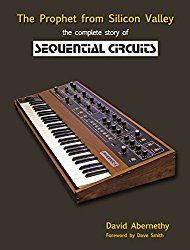
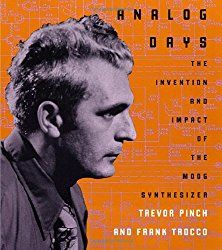
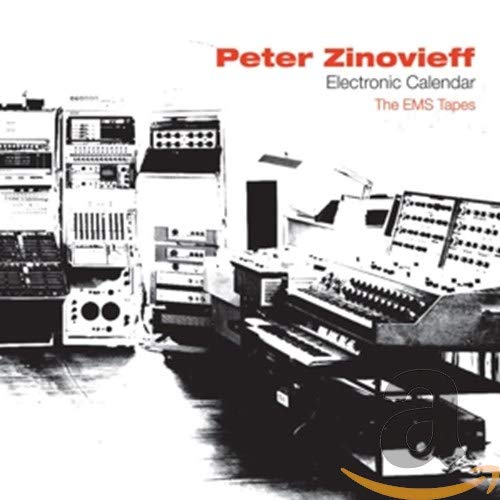
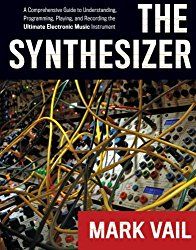
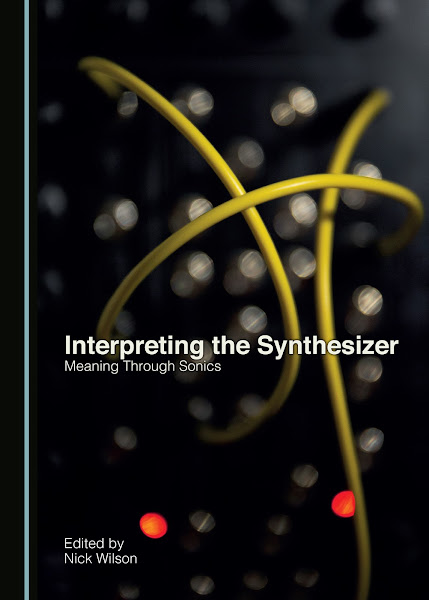
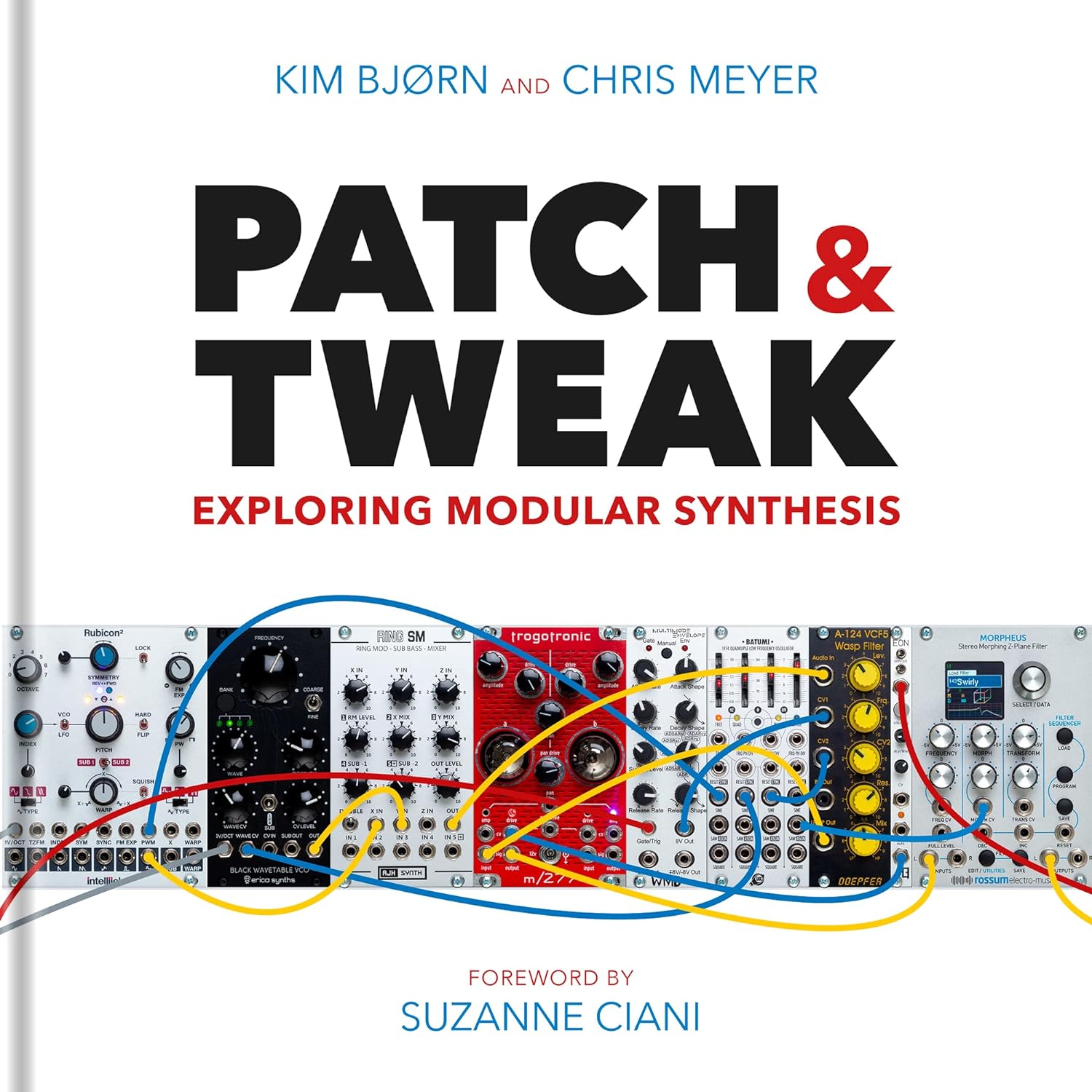
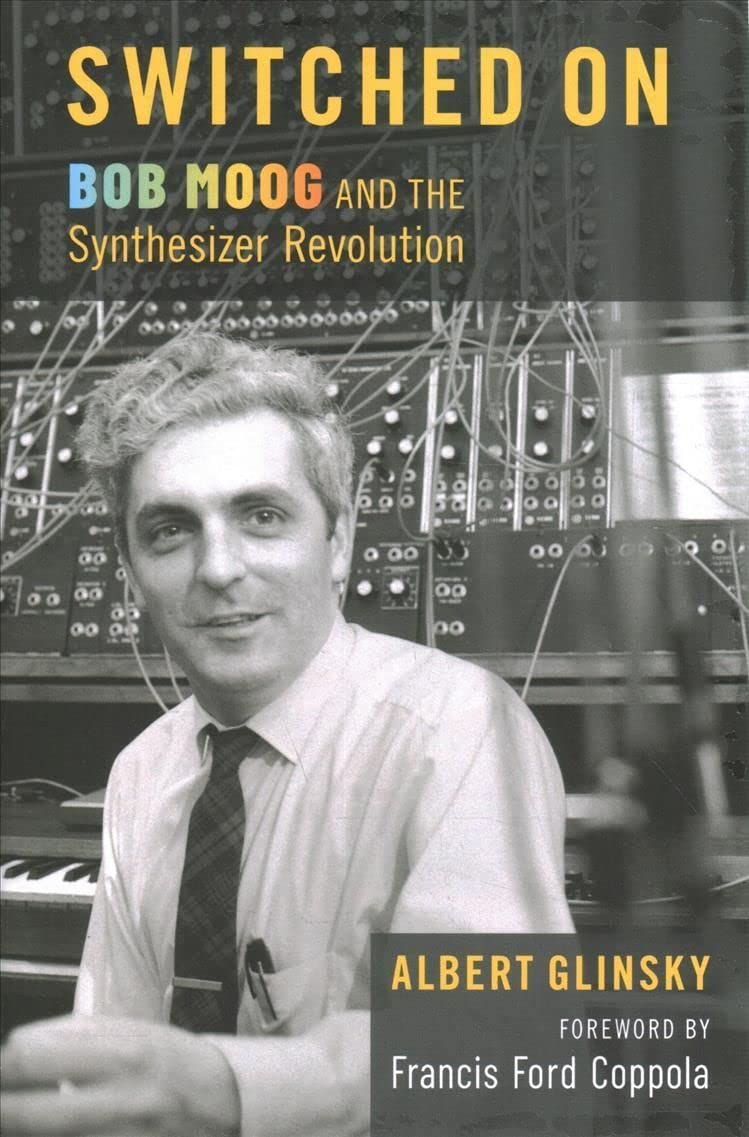
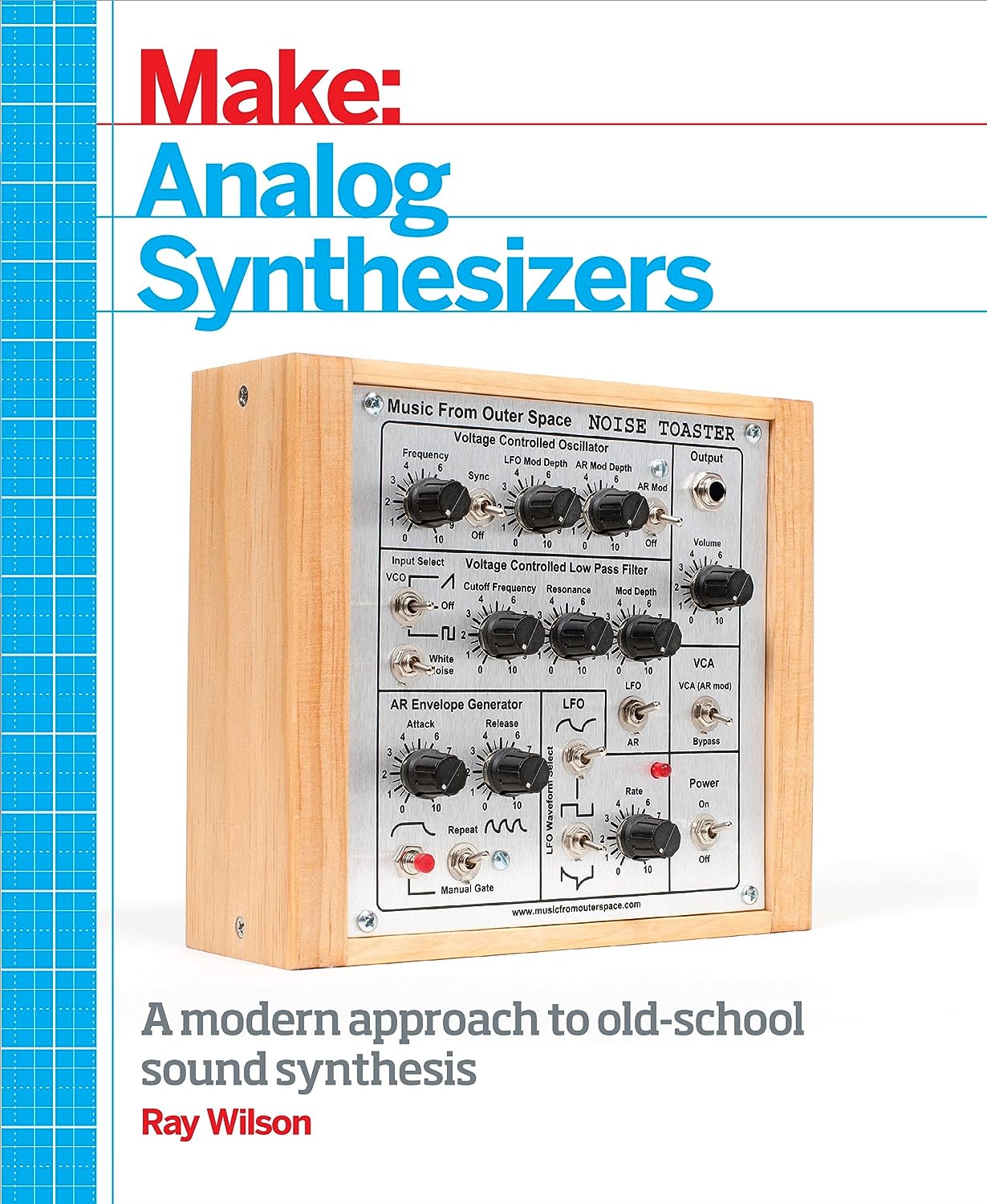
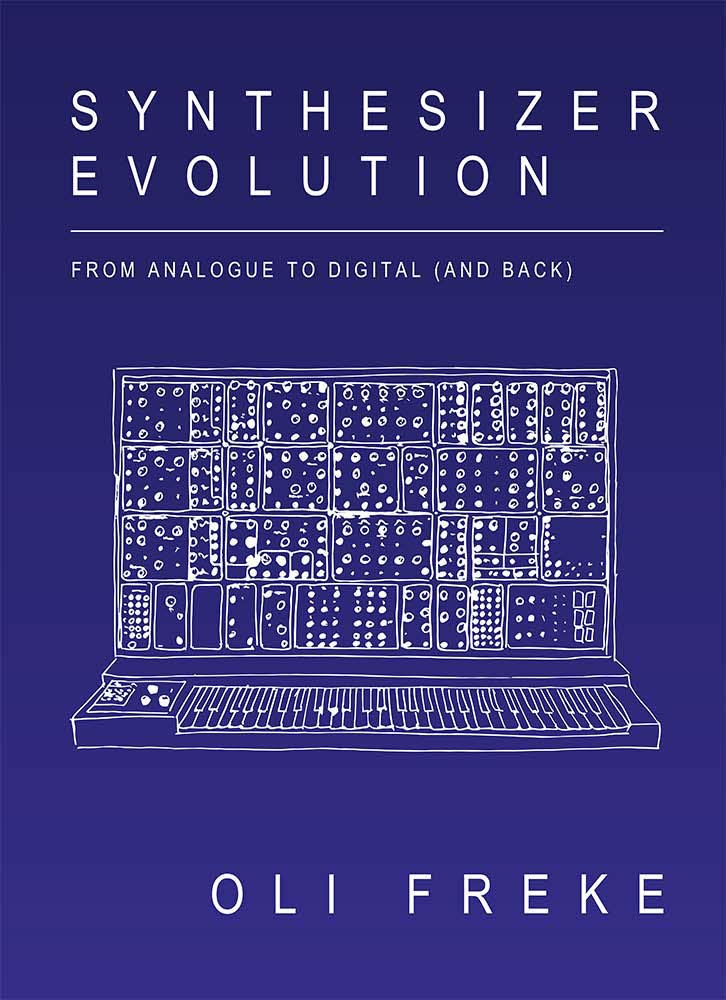
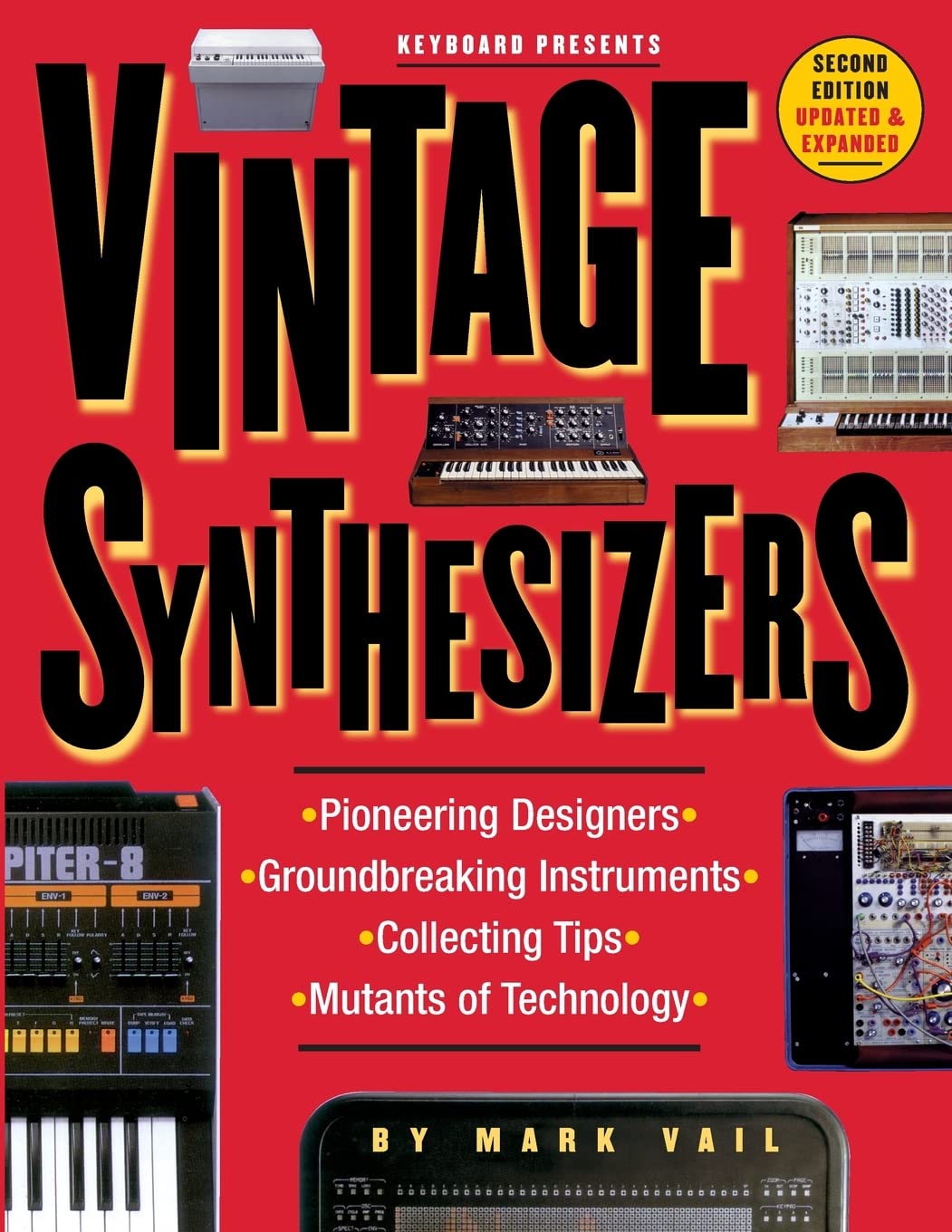
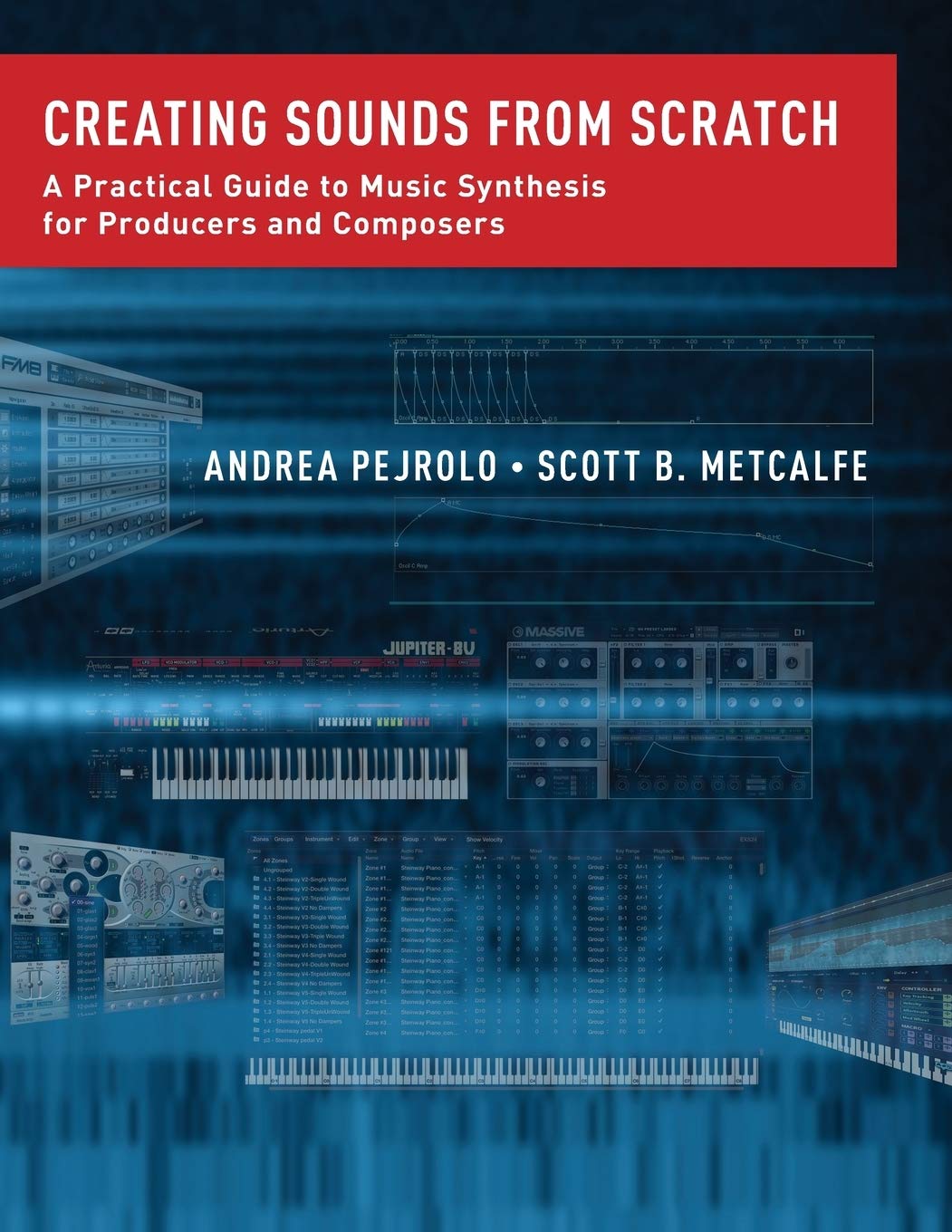
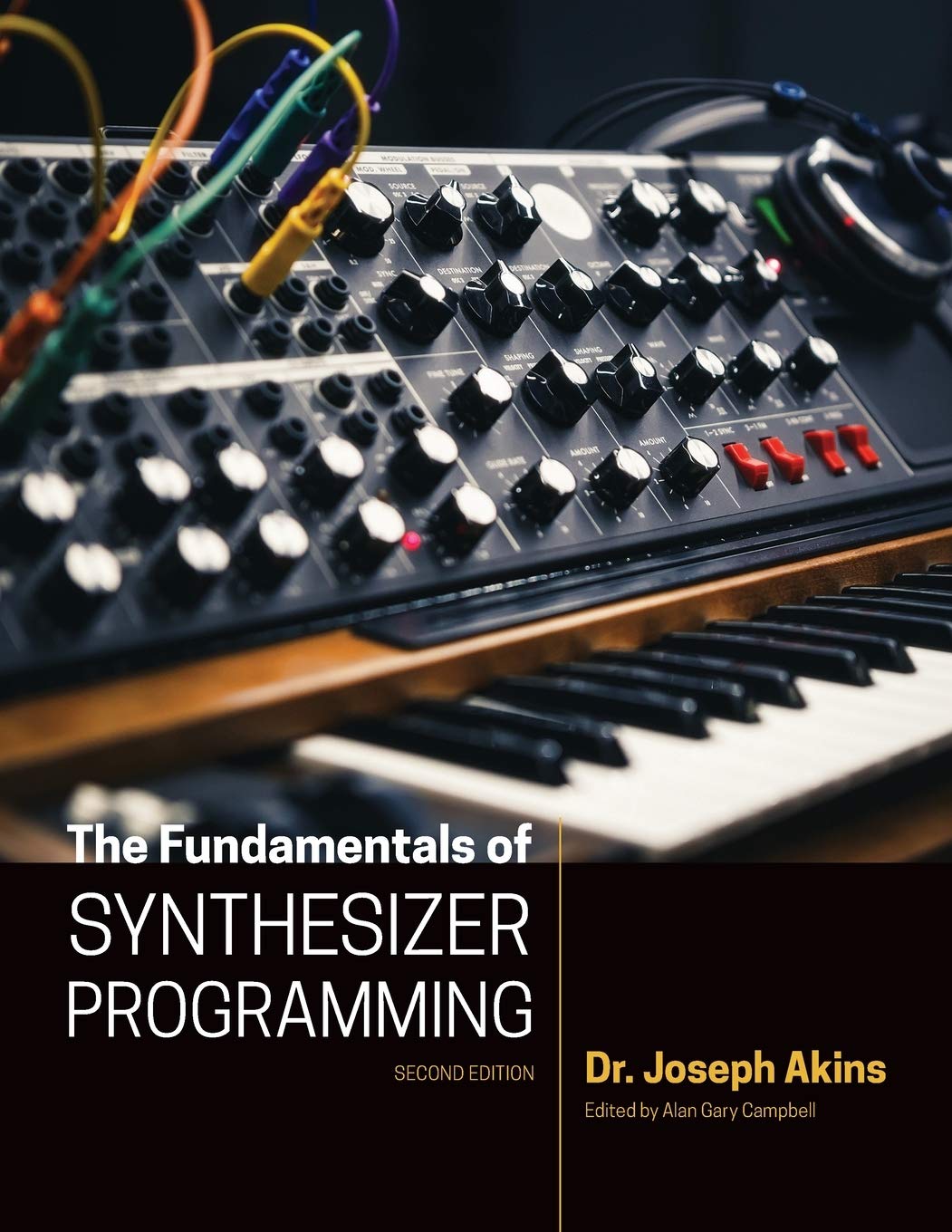

© Matrixsynth - All posts are presented here for informative, historical and educative purposes as applicable within fair use.
MATRIXSYNTH is supported by affiliate links that use cookies to track clickthroughs and sales. See the privacy policy for details.
MATRIXSYNTH - EVERYTHING SYNTH













© Matrixsynth - All posts are presented here for informative, historical and educative purposes as applicable within fair use.
MATRIXSYNTH is supported by affiliate links that use cookies to track clickthroughs and sales. See the privacy policy for details.
MATRIXSYNTH - EVERYTHING SYNTH






























